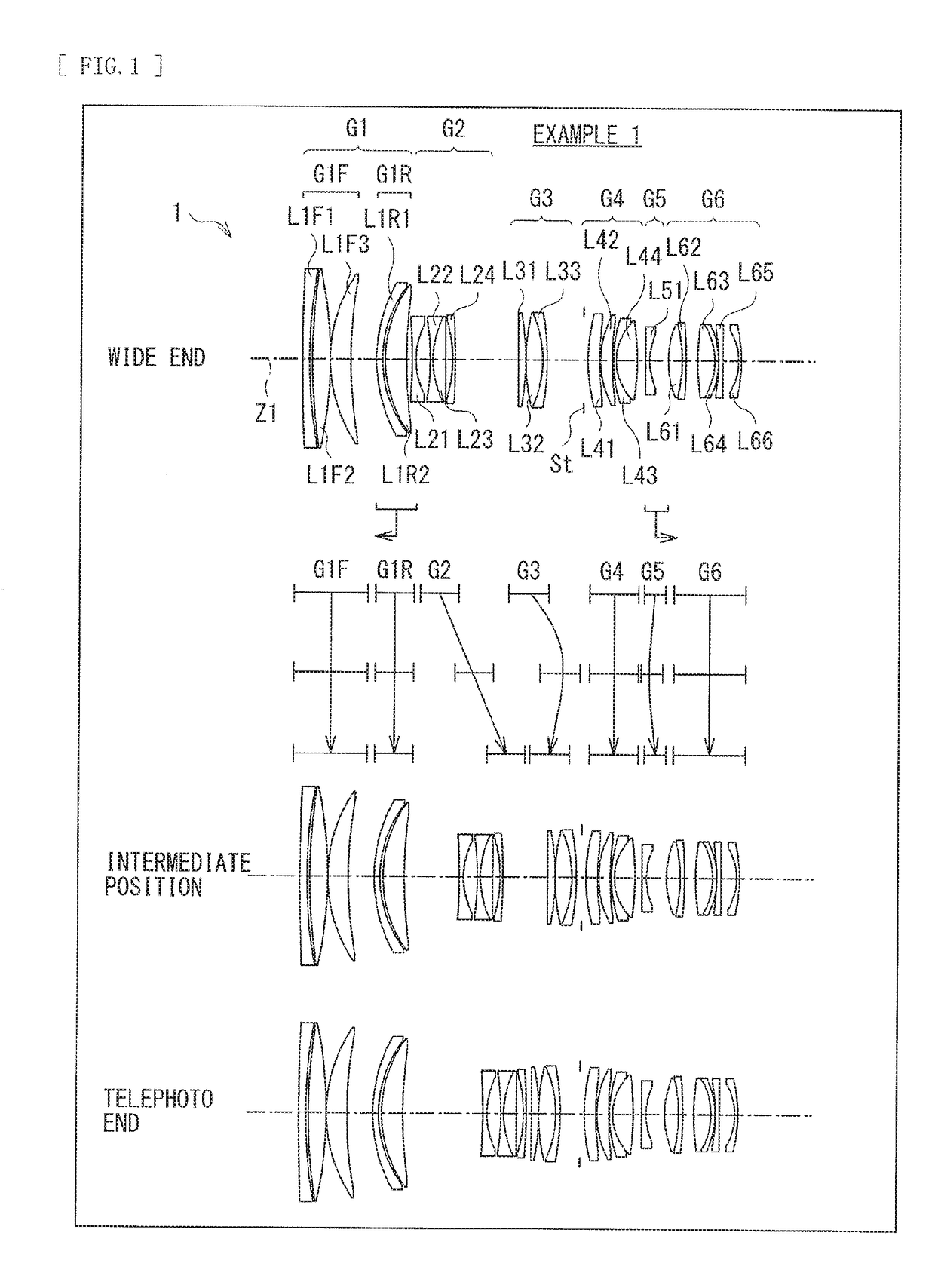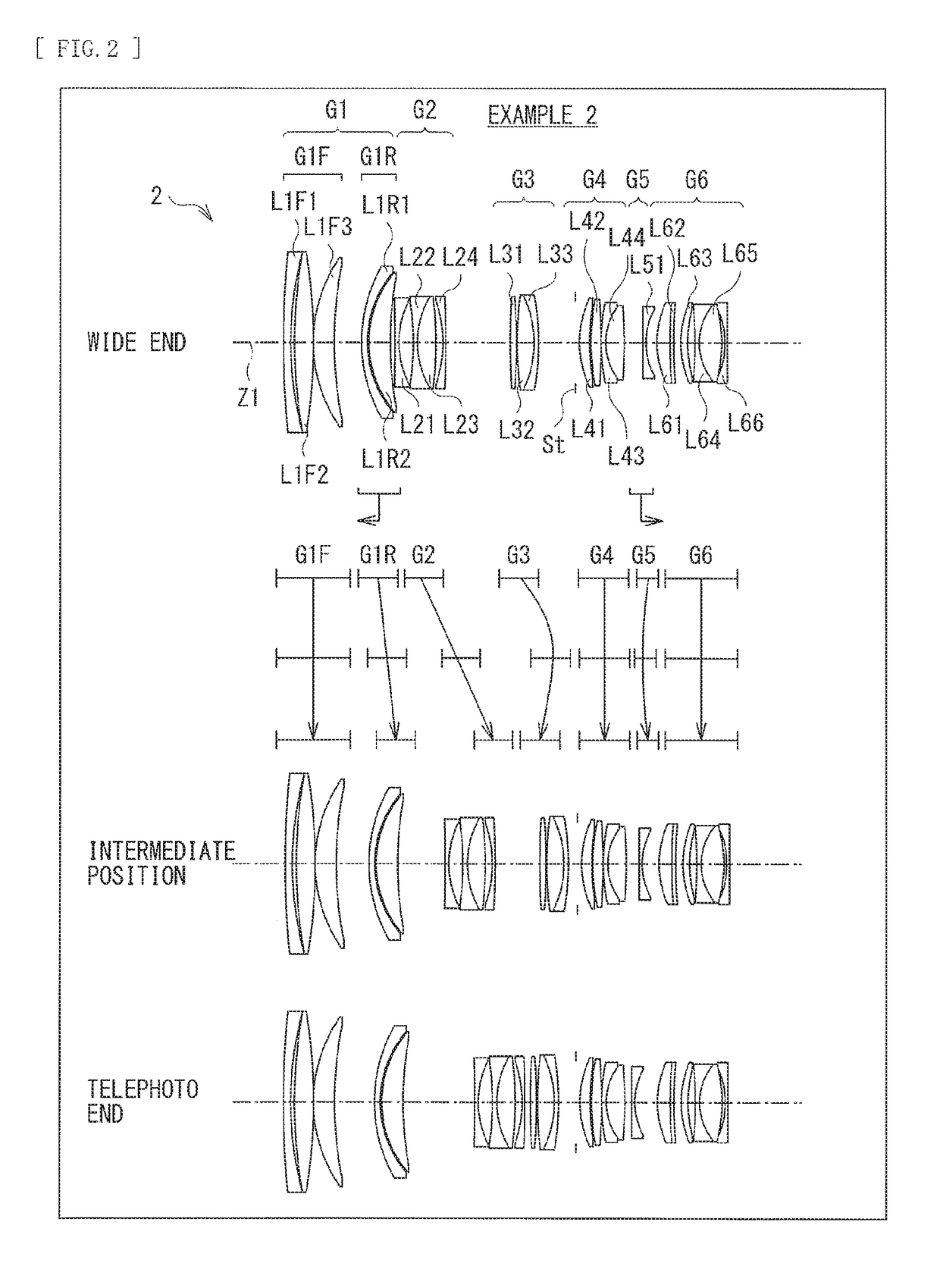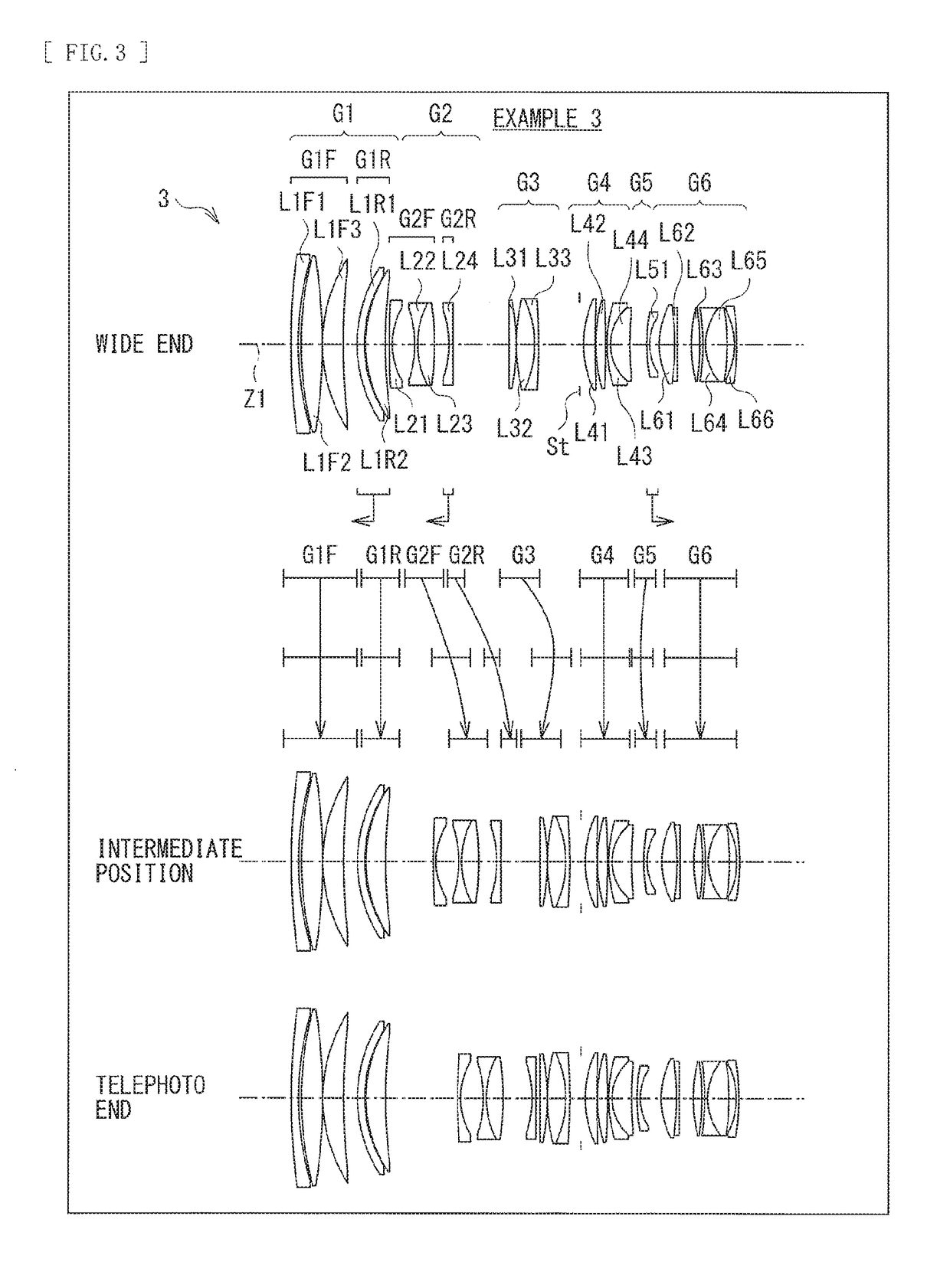Zoom lens and optical instrument
a zoom lens and optical instrument technology, applied in the field of telephoto zoom lenses, can solve the problems of difficult difficult to achieve favorable optical performance, in particular at the shortest distance, and difficult to have high-speed focusing, so as to reduce the total length of the zoom lens and reduce the weight. , the effect of small movemen
- Summary
- Abstract
- Description
- Claims
- Application Information
AI Technical Summary
Benefits of technology
Problems solved by technology
Method used
Image
Examples
numerical example 1
[0107]Table 1 indicates basic lens data of Numerical Example 1 in which specific numerical values are applied to the zoom lens 1 illustrated in FIG. 1. Further, Table 2 indicates coefficient values in aspherical surfaces. Furthermore, Table 3 indicates values of a focal length f of an entire lens system, F number (FNo.), the half angle of view ω, and a lens total length at each of the wide end (the short focal length end), the intermediate position (the standard angle of view, the intermediate focal length), and the telephoto end (the long focal length end).
[0108]Moreover, Table 3 also indicates values of variable surface intervals. In Numerical Example 1, values of surface intervals d10, d17, d22, d30, and d32 vary upon zooming.
[0109]In the zoom lens 1 according to Numerical Example 1, the rear side first lens group G1R and the fifth lens group G5 each serve as a focusing lens group. The rear side first lens group G1R travels toward the object side along the optical axis upon focus...
numerical example 2
[0121]Table 4 indicates basic lens data of Numerical Example 2 in which specific numerical values are applied to the zoom lens 2 illustrated in FIG. 2. Further, Table 5 indicates coefficient values in a spherical surfaces. Furthermore, Table 6 indicates values of a focal length f of an entire lens system, F number (FNo.), the half angle of view ω, and a lens total length at each of the wide end (the short focal length end), the intermediate position (the standard angle of view, the intermediate focal length), and the telephoto end (the long focal length end).
[0122]Moreover, Table 6 also indicates values of variable surface intervals. In Numerical Example 2, values of surface intervals d6, d10, d17, d22, d30, and d32 vary upon zooming.
[0123]In the zoom lens 2 according to Numerical Example 2, the rear side first lens group G1R and the fifth lens group G5 each serve as a focusing lens group. The rear side first lens group G1R travels toward the object side along the optical axis upon ...
numerical example 3
[0136]Table 7 indicates basic lens data of Numerical Example 3 in which specific numerical values are applied to the zoom lens 3 illustrated in FIG. 3. Further, Table 8 indicates coefficient values in aspherical surfaces. Furthermore, Table 9 indicates values of a focal length f of an entire lens system, F number (FNo.), the half angle of view w, and a lens total length at each of the wide end (the short focal length end), the intermediate position (the standard angle of view, the intermediate focal length), and the telephoto end (the long focal length end).
[0137]Moreover, Table 9 also indicates values of variable surface intervals. In Numerical Example 3, values of surface intervals d10, d15, d17, d22, d30, and d32 vary upon zooming.
[0138]In the zoom lens 3 according to Numerical Example 3, the negative lens, of the second lens group G2, positioned closest to the image plane side, in addition to the rear side first lens group G1R and the fifth lens group GS, serves as a focusing le...
PUM
 Login to View More
Login to View More Abstract
Description
Claims
Application Information
 Login to View More
Login to View More - R&D
- Intellectual Property
- Life Sciences
- Materials
- Tech Scout
- Unparalleled Data Quality
- Higher Quality Content
- 60% Fewer Hallucinations
Browse by: Latest US Patents, China's latest patents, Technical Efficacy Thesaurus, Application Domain, Technology Topic, Popular Technical Reports.
© 2025 PatSnap. All rights reserved.Legal|Privacy policy|Modern Slavery Act Transparency Statement|Sitemap|About US| Contact US: help@patsnap.com



